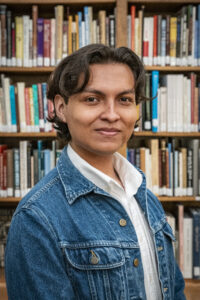This post is part of our blog series “Scholars Speak,” which features writing from our 2024 cohort of Preservation Scholars. Click the link to learn more about this donor-funded program that aims to increase the breadth of voices in the Texas historical narrative by placing students from underrepresented cultural and ethnic backgrounds in paid, 10-week long summer internship positions at the Texas Historical Commission.
Scholars Speak: Archeology Beyond the Field

Everyone has their own reason for becoming an archeologist. Whether it’s wanting to take a hands-on approach to history, or maybe taking one Intro to Archaeology class was enough to convince them that they could be the next Howard Carter with a world changing discovery. For me, it was a mixture of the two. Having been through one field school was also enough for me to become enamored with the idea of having a career beyond the office desk. But if there’s anything I’ve learned working with the Archeology Division at the Texas Historical Commission (THC), it’s that there’s more to archeology than knowing how to dig a perfectly square hole.
I realized this as I began to work on my first project, which was curating the records for the Bernardo Plantation Archeology Project. For some background, the Bernardo Plantation was established by Jared Groce II. Groce was part of Stephen F. Austin’s “Old Three Hundred” colonists who had brought over 90 enslaved individuals, the largest number brought by any of the colonists, and gained success quickly. The plantation gained notoriety in the early years of Texas with its use of the first cotton gin in the state; hosting Houston’s army during the Texas Revolution; and becoming a major supplier of cotton for the Confederacy. However, following emancipation, the plantation failed and the Groce family dismantled it by 1866.
This history was provided in a lengthy archeological report, which included an extensive oral history and analysis of the archeology found during excavations. But how does a report like this come to be? While combing through and organizing hundreds of artifact data forms, excavation unit forms, and inventory lists, I could see the puzzle pieces coming together. As I read through the forms that detailed the types of artifacts and the locations they were found in, I could see how the archeologists came up with their interpretations. This allowed me to understand that the magic of archeology isn’t so much in what you find in the field, but what you found out while analyzing through the artifacts.
Another interesting aspect of the Bernardo project was its focus on involving community. While professional archeologists were involved, so too were college students and other volunteers. The Texas Historical Commission also hosted events to educate the public on the work being done on the plantation. A major part of the report included oral histories from descendants of not just the plantation owners, but the enslaved people as well, which provided much needed context for interpretations. The archeologists at the THC understand the importance of community in archeology. This can be seen through their collaboration with the indigenous tribes of Texas, hundreds of stewards throughout the state, and their preparation for public events for Texas Archeology Month. Involving community in the archeological process demonstrates that archeology isn’t just for those with a degree in it, but for anyone with a love of history and who doesn’t mind getting their hands dirty once in a while.